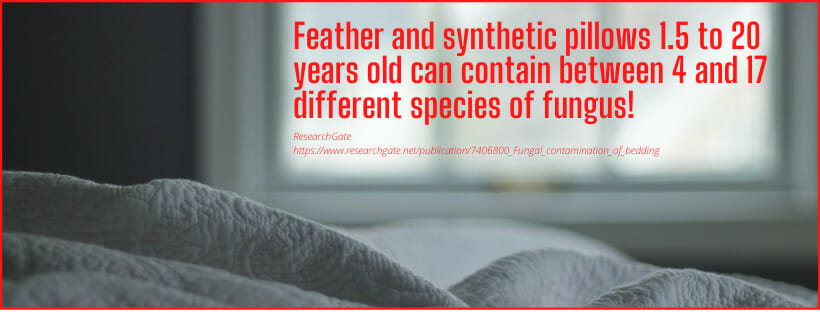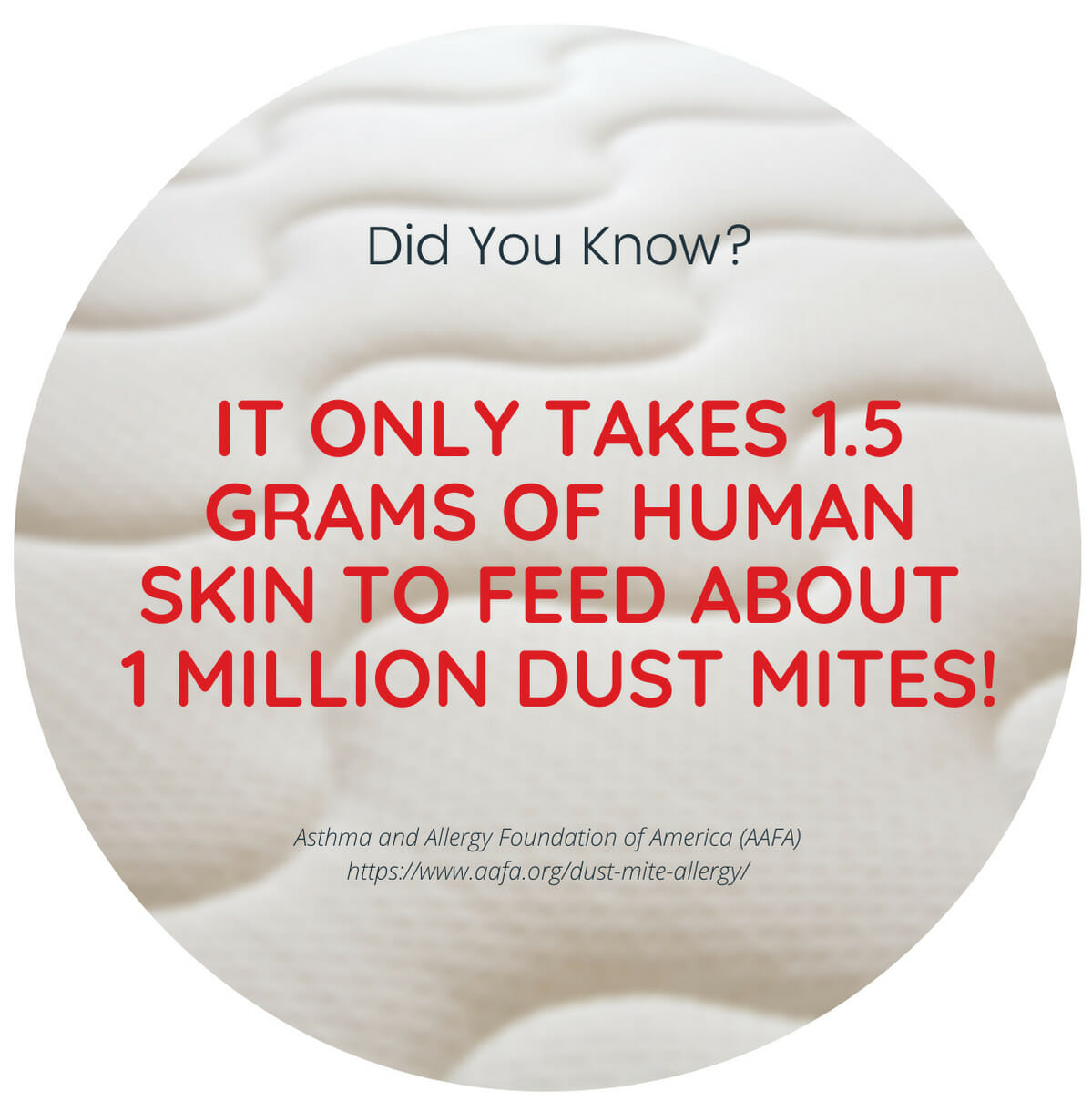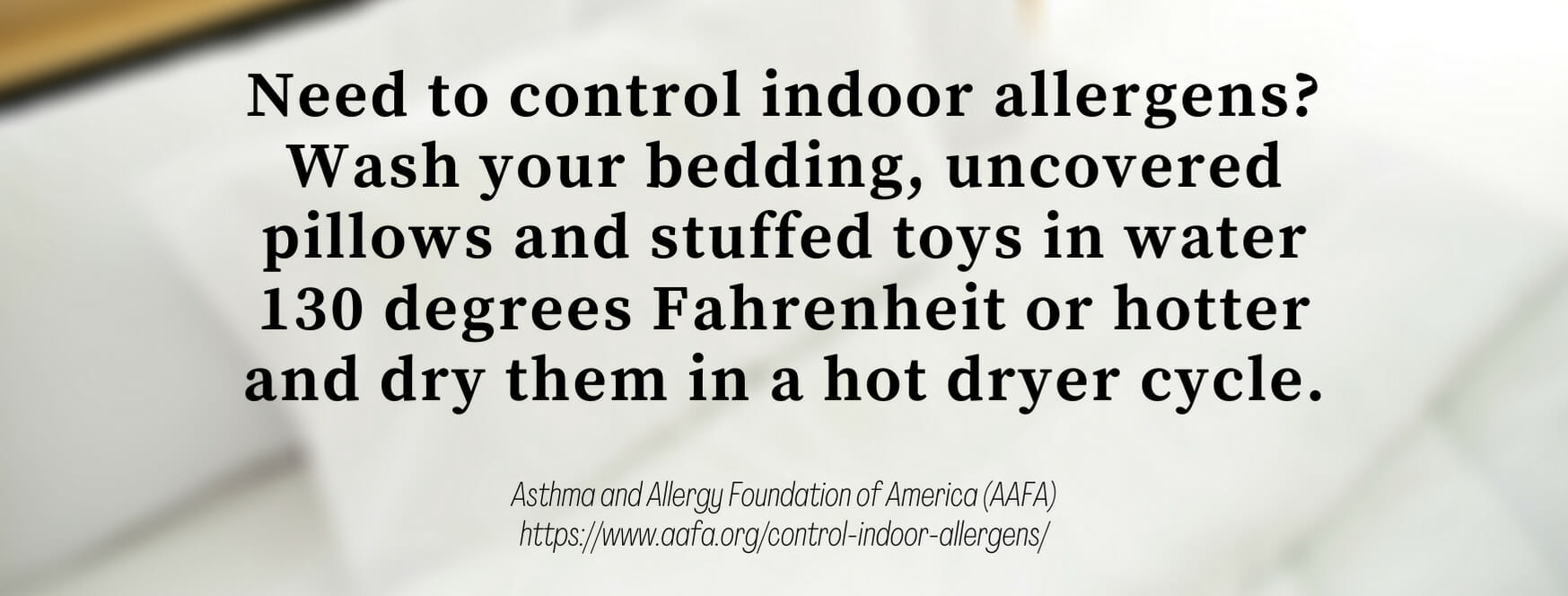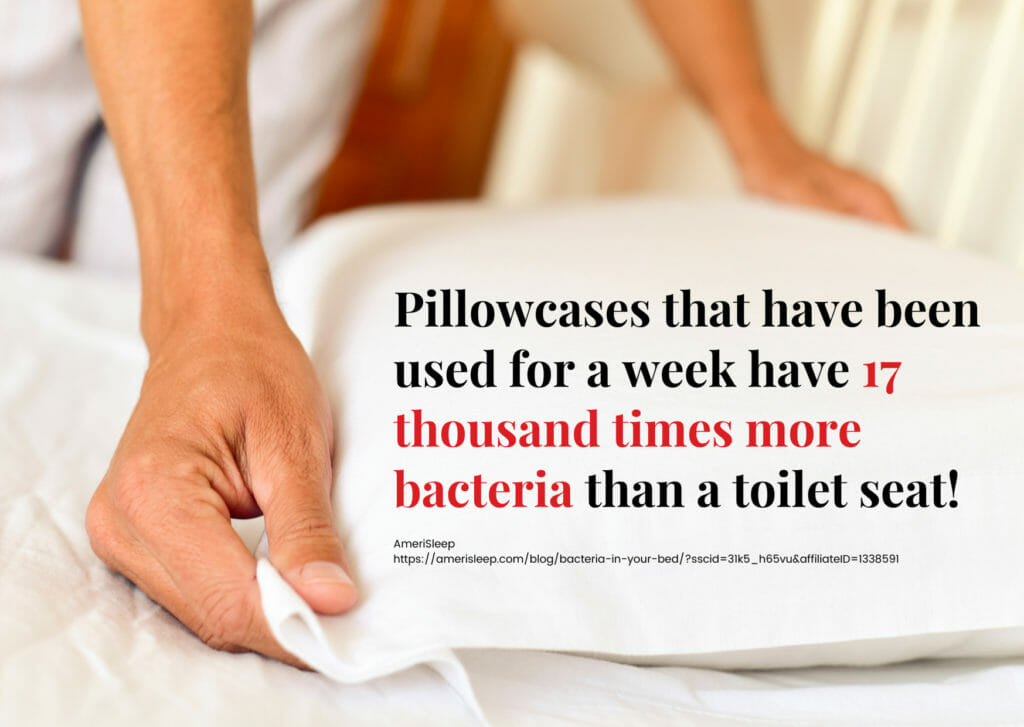Wonder how often you should be washing your sheets? At home, this time has probably got you to reconsider how often and how your bedroom essentials should be cleaned.
Read on for the best information and tips to keep your bed, sheets, and mattresses clean. Warning: Things can get pretty gross here!

Your dirty clothes go to the washing machine when you see the hamper is full, your living room furniture gets wiped down, and your kitchen gets sanitized when you start to see dust and dirt accumulating. To keep them sparkling, you have to clean them regularly, but your bed linens tend to be neglected, unlike those things.
A survey conducted by Mulberry Garment Care showed that 7% of men only wash their sheets after six months, and over 10% of them couldn’t remember the last time they washed their bedding. Only less than 5% of women do it every six months, and more than 5% of them couldn’t recall the last time they cleaned their bedding.
For many of us, the thought of washing and cleaning our bed, sheets, and mattresses make us want to bow out. After a long day, you would want to collapse into your bed and disappear into dreamland! Here’s everything you need to know about washing your mattresses:
Importance of Keeping Your Sheets Clean

Apparently, in a very short period, your sheets are packed with millions of dead skin cells, sweat accumulation, saliva, and other bodily fluids, and even harbor bacteria.
Besides that, your sheets are riddled with millions of dust mites that are too small for the human eye to see.
To top it off, these little critters feed off our dead skin. According to the Asthma and Allergy Foundation of America (AAFA), it only takes 1.5 grams of human skin to feed about 1 million dust mites.
This means you lie in bed together with the 1 million dust mites and their droppings that cause allergies. Thus, the longer you put off washing your sheets, the more dust mites procreate and build up.
Also, if you have been sick and laying on your bed, the bacteria can spread out. When you have an open cut or wound, bacteria can enter your body and potentially cause infection. A study conducted by Amerisleep showed that pillowcases used for a week have 17 thousand times more bacteria than a toilet seat.
The study also reported that a new mattress has only 3 million (CFU) bacteria and will have over 16 million in 7 years. EWW! These should be enough reasons to gross you out and for you to undress your bed, wash the linens, and clean them all regularly.
So, what happens when you don’t wash your sheets?
It can expose you to bacteria, fungi, and germs. It could even be worse for your babies, kids, and if you have sensitive skin. Youngsters spend a lot of time in their bed, depending on what they are wearing or doing. The sheets get into contact with almost every part of their face and body. Dirty beddings can be a cause for skin irritation or skin allergies to your little ones.
What is the culprit behind these skin reactions?
- Dust mite allergies – This is triggered by dust mites that live in dirty sheets. They multiply, especially in a warm and moist environment.
- Eczema – Ten percent of the children in the world suffer from this inflammatory skin condition. They usually carry characteristic symptoms like dryness, itching, redness, and infections (from scratching). Eczema manifests on the scalp and face for babies, while toddlers and older children usually have it in the creases of their ankles, wrists, and around their knees.
- Pet Dander Allergies – If you are a pet lover who lets your furry friend into the bed, then you should be aware of pet dander— formed from tiny skin shed by animals – that can be brought with them onto your bed. Pet dander can trigger skin reactions, and if your pet likes to hang outdoors, then they are likely to bring other animals’ dander, mold spores, and pollens, too. Common symptoms of pet dander allergies include puffy eyes, runny nose, irritating skin, and itching.
Unwashed Bedsheets Can Make You Sick Or Hurt Your Skin!
Here’s how:
- Acne – A New York-based dermatologist, Joshua Zeichner, M.D., said that when you move around the bed, you create friction, and when you have dirty sheets and pillows, these can cause your pores to clog. This will eventually lead to breakouts on your face and even your back. All the sweat and oil are a perfect formula to create a breeding ground for bacteria.
- Allergies and eczema – As mentioned above, dead cells and dust mites can cause you to flare up. When your sheets are grubby, the bacteria can cause skin irritation or bacterial infection known as eczema.
- Asthma – Constant exposure to dust mites and allergens in your sheets can worsen your asthma. These critters’ droppings are loaded with allergens which can cause allergic rhinitis or severe asthma attacks.
- Cold and flu – If you have a cold or flu, someone else can likely catch it from contact with your bedding or sheets. This is important when you share a bed with your partner or children.
Washing your sheets is an important part of your routine and one factor in keeping yourself and your family healthy. Motivated yet? Knuckle down and read on to find out how frequently you should be washing your sheets and other bed linens. Here’s a clue: It’s not just once a year.
When to Wash Your Bed Linens According to Experts
- Bedsheets
Cleveland Clinic reported that you should wash your sheets twice a month. However, when the temperature rises and the weather gets warmer, you should increase the effort once a week. This is because you sweat more in warm weather and dust mites love warm environments. The Asthma and Allergy Foundation of America recommends washing beddings at least once a week. Don’t wait until your bedsheets are ridden with bacteria!
- Pillows, pillowcases, and blankets
While sheets need to be washed more often, pillows and other bed linens must be washed at least once every six months.
Of course, there are exceptions to these many rules. When your pets sleep in your bed, when you have been lying in bed sick, when you sweat excessively, you sleep naked, eat in bed, or when you go to bed without showering, you bring in more dirt than you should. These situations would require you to wash your bed linens more often than once every six months. Wash them every 3-4 days as recommended by the Sleep Foundation.
Also, note that when you are prone to acne and skin allergies, you should toss your pillowcases two to three times a week, as recommended by the American Academy of Dermatology. The same goes if you usually sleep with makeup or wash your hair only a few times a week.
- Comforters, duvet covers, and mattresses
According to the Sleep Foundation, other bedding like comforters should be washed once every 2-3 months and once every two weeks to a month for duvet covers. In addition to that, mattresses should be cleaned once every six months. This not only benefits your health; it also extends the lifespan of your mattress! However, when you notice your mattress start to wear out and give you issues, it’s advisable to change them (generally, every 6-8 years).
How Often You Should Wash Your Sheets

Now you know how often your sheets should be washed, but you should also know how to do it right. Let us help you figure out your needs to wash bed sheets and linens efficiently! Here are some tips:
Preparation
- Understand the load capacity of your washer.
One of the factors to get your linens clean is not to overload your washer. Sheets need space to float in water and detergent, which is essential in removing stains and soil. If your washer gets congested, the sheets will come out the same—stained and soiled. Know the size of your washer and see if how much laundry it can hold. As a main rule, a top load washer is typically for 12 pounds of laundry. A front-load washer accommodates 15 to 18 pounds of laundry, and a plus-sized front-load washer has a 20- to 22-pound laundry capacity.
- Determine the best detergent to use.
Nothing feels better than climbing into your bed with fresh fabric and scent. Even so, not all laundry detergents are alike. There is a wide variety of laundry detergents on the market. Some detergents scent can irritate your sinuses, and some of them can leave your sheets dry and harsh on your skin. Look for detergents that promote sleep and offer calming scents.
Besides fragrance, cleaning power, sensitivity to the skin, and environmental impact should be considered when choosing a detergent. Heavily-perfumed detergents might irritate, so choosing certain fragrances or even unscented ones is advisable. Also, look for “hypoallergenic” on the label. They are safe and perfect for babies or those with sensitive skin.
You may also find products that are non-toxic, plant-based, and do not contain synthetic scents. A mild detergent is appropriate for cotton and cotton-polyester-blend sheets. They may be mild and non-toxic but are still strong enough to combat stains on your sheets. Most eco-friendly detergents are also gentle on skin sensitivities. You can check your eco-friendly supermarkets. Other detergent products should be fine as long as you do not have specific skin sensitivities. A liquid detergent is recommended since it’s easier to throw them into the washer and dissolves thoroughly.
- Prepare stain treatment products.
Keep your white sheets looking white by using stain treatment products. You can use a whitening booster or a detergent with stain-removing elements. However, refrain from using chlorine bleach since it will make some fluids and stains on your sheets appear yellow. You can find products that are chlorine-free and more powerful than bleach. If you want a more concentrated stain remover, opt for gel products that can combat the toughest stains like coffee, grass, red wine, chocolate, blood, etc.
- Read labels or special care instructions,
Check your sheet’s care label or packaging for recommendations. Most sheet fabrics are cotton, cotton-polyester blend, and Egyptian cotton. However, special sheet fabrics like bamboo, linen, and silk have special care instructions and require a specific detergent. These fabrics are mostly hand-washed, but when tossed in the washing machine, you should use the most delicate cycle wash to avoid twisting their fibers.
- Know your washer setting.
Some new washing machines have special cycles just for washing sheets. Those who do not have these options, select the “normal” or “casual” instead of a heavy-duty cycle. Bedsheets don’t have to be put on a heavy-duty cycle to avoid tangling and wrinkling.
- Determine water temperature.
It is recommended that cleaning your bedding and pillows on warm water (not scalding hot) can kill any bacteria. On the other hand, some specific stains need a cold cycle first before going into warm or hot water. Again, read the labels to prevent color or fabric deterioration.
Washing and Drying
Wash sheets separately from clothing, towels, and anything else. It is also important to separate light-colored sheets from dark ones to protect their strong colors from bleeding onto the lighter ones or giving them a grey appearance. Select the right setting and wait for the wash cycle to finish. Transfer new sheets onto the dryer quickly to prevent molds from forming. Be sure to keep them from being tangled together. Otherwise, your new sheets will dry unevenly. Choose a low heat setting to reduce damage from high temperatures. Make sure to remove the new sheets from the dryer on time to prevent wrinkling. Fold them, smooth wrinkles out using your hands, and avoid ironing them. Ironing sheets can damage its fibers.
Storing Sheets and Bed Essentials
If you have various bedding essentials, then use boxes, bins, or baskets to organize them. Store folded sheet sets with their corresponding pillowcases and label storage containers by bed size, type, or color. Put your most frequently used items in front for smooth access. You may also want to cover your shelves with a liner to protect your bedding from fading or discoloration over time. Lastly, keep your linen closet fresh. Don’t let mildew and molds destroy your fresh sheets. You can put a dryer sheet inside to keep them smelling fresh.
How To Wash And Dry Your Pillows

Do you recall the last time you’ve washed your pillows? Besides washing pillowcases regularly, it’s also important to keep your pillow clean and germ-free. Here’s how you should wash them and keep them long-lasting.
- The first thing to do is checking your pillow labels. Some pillows are machine washable, dry-clean only or have strict front loader washing conditions.
- Wash two pillows at once to ensure an all-around cleaning.
- It’s better to use a washing machine with no agitator, but if your washer has it, you can position your pillow vertically on either side of the agitator. This minimizes the chance of pillows getting damaged by the agitator.
- Always choose a gentle cycle for your pillows and use warm water. Toss in detergent, a preferable liquid, to ensure it mixes completely. This is to avoid leaving sticky soap spots on your pillows. However, if you have foam pillows, use a powder detergent specifically designed for the pillow.
- Tumble the pillows in the dryer and use a low to a no-heat setting. This setup is good for down or foam pillows. If you have other types of pillows, you can dry them in moderate heat. Throw in dryer balls to help ease up clumps in the pillows.
- Don’t forget to fluff and turn them often while drying to distribute heat in your pillows completely. It can take longer for them to dry than your sheets. If they get a musty smell, you can leave them outside under the sun.
- Allow the pillow to dry completely.
Additional tip: Replace your pillows when you notice them having an unusual oder even after being washed. Fold them in half and see if they spring back to shape. If they don’t, then it’s time to buy new ones.
How To Wash And Dry Your Comforters and Duvet Covers
Comforters and duvet covers are bulky and usually require a large machine at a laundromat or dry cleaner. But if you are wondering how to wash them at home, here are some tips you can follow:
- It is always recommended to read special wash or care instructions for comforters and duvet covers. You need to find out whether they are washing machines safe or should be dry-cleaned.
- Check for stains, loose threads, tears, and other damages before tossing them into the washer or cleaner. Take care of those damages, so your comforters and duvet covers do not deteriorate further.
- Don’t cram them in. Always check the capacity of your washer. Use cool water, or if you want to get rid of dust mites and bacteria, then a hot temperature would be your bet.
- Select a delicate cycle and your preferred mild detergent.
- You can place two tennis balls in the washer to help balance the load out.
- Transfer them (together with the tennis balls) to the dryer and set the machine on low heat for several hours. Remember to check, turn, and fluff them every 20 minutes until the dampness is gone.
How To Clean Your Mattress
A mattress should be made to last and to make it even last longer. You need to know how to care for it. Strip your bed and keep your mattress odor-free, clean, and fresh by doing the following:
- Prepare your cleaning tools and supplies. You will be needing:
- A vacuum with an upholstery attachment
- Stain remover
- Baking soda
- Vacuum the mattress and get rid of the dust by going over the mattress’s top and sides. Then you can replace the attachment with the crevice tool to reach surfaces, edges, and areas where hidden dirt and dust accumulate.
- It is not appropriate to wet clean or soak a mattress. So, for you to ditch the stains, lightly spray stain remover on the area. Blot and dab the stain, working towards the outer edge of the mattress. To rinse and remove all traces of the stain remover, dab the area with a damp cloth and let it dry thoroughly before making the bed. When cleaning the mattress, less is more. So be sure to use as little product and water as possible.
- Expose your mattress to the sun to kill bacteria and mold. If it is impossible for you to carry your mattress out in the sun, you can sprinkle down baking soda on it. Leave it for several hours and open the windows in your bedroom to let the sunlight in. This process will help break down acid and sponge up leftover moisture in your mattress.
- Vacuum the baking soda up.
Additional tip: Flip and rotate your mattress every six months to prevent indentation and sag. This will help your mattress last you through many phases in life.

Yes, laundering your sheets and cleaning your bedding will never be easy tasks, but that does not mean you shouldn’t do it. The benefits of washing your sheets and bedding essentials are worth it. Nothing beats the satisfaction you get when you dive into a fresh, crisp, and clean bed at the end of the day.